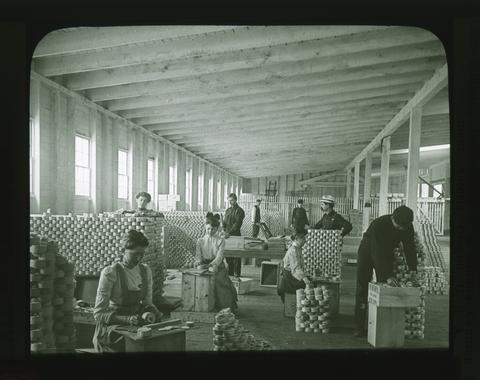Search
You searched for:
Start Over
Salmon habitat restoration
Remove constraint Salmon habitat restoration
Subject
Salmon
Remove constraint Subject: Salmon
« Previous | 1 - 20 of 30 | Next »
Search Results
-
1. [Article] Proposed regional general permit for stream restoration : programmatic biological opinion
On April 7, 2000, the National Marine Fisheries Service (NMFS) received a request from the U.S. Army Corps of Engineers, Portland District (COE) for Endangered Species Act (ESA) section 7 formal consultation ...Citation -
The objective of this Biological Opinion (BO) is to determine whether the action to restore emergent vegetation to wetlands on Sauvie Island is likely to jeopardize the continued existence of Upper Willamette ...
Citation -
This report is intended for citizen advocates. The goal is to provide a concise summary of current issues and problems for native salmonids in the Upper Deschutes and describe the actions needed to resolve ...
Citation -
The fitness of female Pacific salmon (Oncorhynchus spp.) with respect to breeding behavior can be partitioned into at least four components: survival to reproduction, competition for breeding sites, success ...
Citation -
5. [Article] Salmon anchor habitats in northwest Oregon state forests : a review of the policy-making process.
The purpose of this document is to provide the SAH Workgroup with a summary of SAH strategy development and identify issues that have arisen so that all work group members have a common understanding of ...Citation -
6. [Article] Keying forest stream protection to aquatic ecosystem values in multi-ownership watersheds
Forested lands of western Oregon provide aquatic habitat for many fish and riparian dependent species, including a wide variety of salmon species. Current policies set riparian protections using fixed ...Citation -
7. [Article] Design of Managed Aquifer Recharge for Agricultural and Ecological Water Supply Assessed Through Numerical Modeling
This is an author's peer-reviewed final manuscript, as accepted by the publisher. The published article is copyrighted by Springer and can be found at: http://link.springer.com/journal/11269Citation -
This annotated bibliography was prepared for the Salmon Anchor Habitat Work Group. This group was formed by the Oregon Department of Forestry to review and evaluate the Salmon Anchor Habitat Strategy as ...
Citation -
This document compiles written responses by experts in their respective fields to questions from the Salmon Anchor Habitat Work Group about the Salmon Anchor Habitat Strategy component of Oregon Department ...
Citation -
10. [Article] Salmon of the Future: Planting conifer trees now may improve fish habitat later, Featuring Dr. Bill Emmingham
The diverse habitat required by salmon and other anadramous fish is often created by fallen debris in a stream. Scientists aid conifers in growing near streams to eventually become this debris.Citation -
The report summarizes basin level accomplishments and investments related to water quality improvements, fish recovery, and watershed health. The report also provides an overview of state agency actions and ...
Citation -
12. [Article] The Influence of Deep-Seated Landslides on Topographic Variability and Salmon Habitat in the Oregon Coast Range, USA
A well-accepted idea in geomorphology is that landforms control the type and distribution of biological habitat. However, the linkages between geomorphology and ecology remain poorly understood. In rivers, ...Citation -
On March 24, 1999, the National Marine Fisheries Service (NMFS) published its final decision to list the Upper Willamette River evolutionarily significant unit (ESU) of chinook salmon as threatened under ...
Citation -
Juvenile Chinook Salmon (Oncorhynchus tshawytscha) have a finite amount of energy that they can use to move from their riverine habitat to their oceanic habitat. Fish in the Willamette River Basin are ...
Citation -
The Coos Bay, Medford, and Roseburg Bureau of Land Management (BLM) District Offices submitted May 25 and June 20, 2000, letters requesting formal consultation for a number of proposed activities that ...
Citation -
 This shows the packing process going on in the warehouse. A standard case of salmon consists of forty-eight one-pound cans. Everyone recognizes that the best fishing grounds may be depleted of fish after ...
This shows the packing process going on in the warehouse. A standard case of salmon consists of forty-eight one-pound cans. Everyone recognizes that the best fishing grounds may be depleted of fish after ...Citation -
The 2003 Oregon Legislature directed the Oregon Department of Forestry (ODF) to convene a citizen work group to review and evaluate the ODF Salmon Anchor Habitat Strategy for state forests in northwest ...
Citation -
As part of a hierarchical approach to classifying watersheds and stream habitats based on geomorphic and geologic criteria, we defined ten classes of fluvial and lacustrine habitats at the scale of valley ...
Citation -
The Oregon Plan is a state-led strategy for restoring and conserving native salmonids and the watersheds within which they spend all or parts of their lives. It evolved from work that began in the 1980s ...
Citation -
20. [Article] Terra ; Vol. 4 No. 1 (Winter 2009)
25 pagesCitation